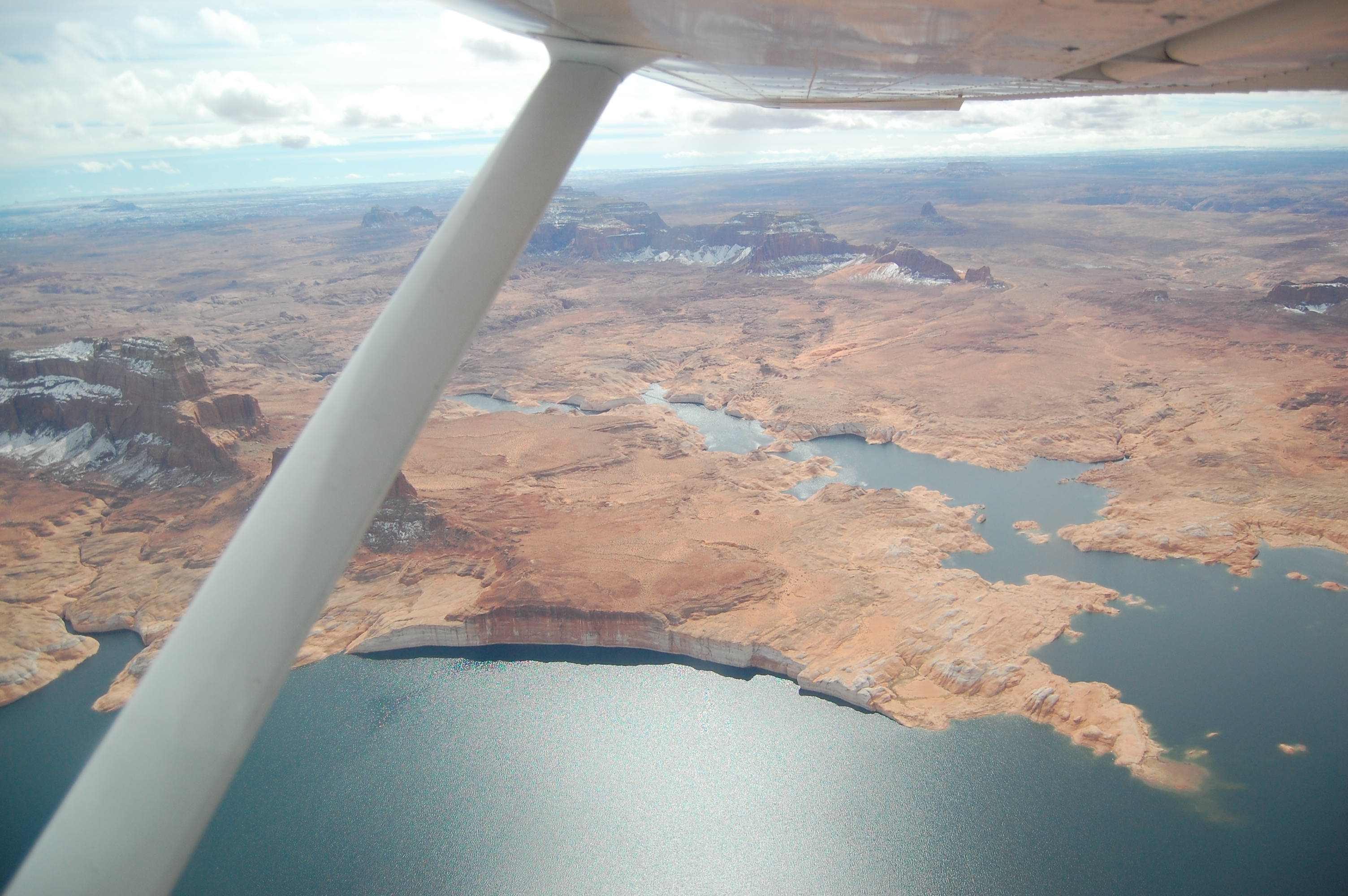
Page, Arizona – The water seems to sparkle as the midday sun shines down on the maze of connected canyons that make up Lake Powell.
Flying high above the second-largest reservoir in the United States on the Arizona-Utah border is a surreal experience – not only because of the beautiful landscapes that stretch out before our eyes, but also due to the upsetting reality that is ever-present here.
Lake Powell is in crisis. And as we peer out the small windows of this Cessna plane, that’s impossible to miss: Watermarks line the sand-coloured canyons below, indicating where the water once reached but no longer does.
Earlier this year, the reservoir hit the lowest level in its history, a stark indicator of the drought that has ravaged the southwestern US and put the waterway that feeds Lake Powell – the mighty Colorado River, the nation’s sixth largest – in jeopardy.
Years of aridification, made worse by climate change, have forced authorities at all levels to consider water cuts as they try to stave off the collapse of the river, a 2,330km (1,450-mile) span that starts in Colorado and ends in Mexico, and supplies water to more than 40 million people across two countries.

The process has been long and painstaking, with multiple levels of authority involved, and negotiations about how to allocate water across the seven so-called US basin states – Colorado, Wyoming, New Mexico, Utah, Arizona, California and Nevada – are continuing.
Travelling across the Colorado River region this past February, from Durango in southwestern Colorado, down through Arizona and back up to Lake Mead in Nevada, the issue of water scarcity was front of mind for most people with whom we spoke. The word “drought” was on the tip of everyone’s tongue.
Sarah Porter, a water expert at Arizona State University, summed the dilemma up succinctly: “It’s just really hard to take away someone’s water, and it’s really hard to agree to give up water when water is the resource that everybody needs.”
But amid the uncertainty, and the continuing talks about water cuts, the crisis has presented an opportunity to right an historical wrong: the exclusion of Indigenous peoples from the decision-making process on the Colorado River.
“It’s given us the opportunity … to create policy that’s inclusive of those voices that have been missing, and that are inclusive of the values of today,” Daryl Vigil, a member of Jicarilla Apache Nation in northern New Mexico and co-facilitator of the Water & Tribes Initiative, told us.
Across the region, Indigenous tribes are demanding a seat at the table – and even more than that, they are insisting that their water rights are protected after generations of neglect. This, Vigil said, has already led to improvements in how US authorities view – and respect – tribal sovereignty.
We witnessed this push for water rights in Southern Ute, Ute Mountain Ute, Gila River Indian Community and Fort Mojave – communities that, while separated by geography, as well as their specific traditions and water needs, are all saying, “We must decide for ourselves.”

Stephen Roe Lewis, the governor of Gila River, stressed that despite their differences, the 30 tribal nations in the basin that are recognised by the federal government also share much in common.
“When you have 30 tribal nations, you have 30 tribes that have their own specific water history, that have their own priorities. But nonetheless, the federal government, they have a trust responsibility to tribes … and to water as a trust resource, but also to tribes as sovereign nations,” he told us.
“Within that spirit, that’s how we find commonality, that’s how we come together, that’s how we work together. We may not always agree on the finer points, but we do agree that water is sacred, water is life.”
This article was supported by The Water Desk, an independent journalism initiative based at the University of Colorado Boulder’s Center for Environmental Journalism.
Aerial photography was made possible through LightHawk donated flights.







